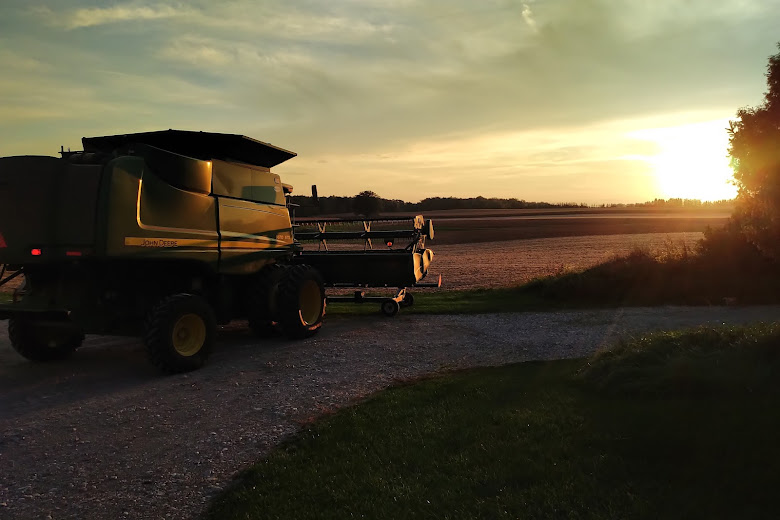AS PREVIOUSLY PUBLISHED IN THE RURAL VOICE:
Until recently, there was a thin strip of laneway running behind a building not far from Downtown Toronto that still belonged – at least on paper – to the man who bought it 1824. Although that owner died in 1870, he was still considered by the Land Registry in Ontario to be the registered owner of the strip, which is wide enough only for a car (or horse and cart) to pass along. On an application made to the Superior Court, the present-day corporate owner of the adjacent property has now been declared the owner of the strip of laneway on the basis of adverse possession.
By operation of Sections 4 and 15 of the Real Property Limitation Act, a person who has been in legal possession of another’s land for a period of ten years while the land has been registered under the Registry Act – adverse possession – can obtain possessory title to the land; the ownership interest of the registered titleholder will be extinguished. The claimant for possessory title must meet three requirements: 1) the claimant (or his or her predecessors-in-title) must have had actual possession of the land being claimed, which means “open, notorious, peaceful, adverse, exclusive, actual, and continuous having regard to the nature of the disputed property”; 2) the claimant must have had the intention to exclude the registered owner and other persons entitled to possession of the disputed land (an “animus possidendi”); and, 3) the registered owner and any other persons entitled to possession must have been excluded for the 10-year statutory period. Where the three requirements are met, the claimant can seek a declaration from the Court that the claimant is the true owner of the disputed lands and an order requiring that the Land Register be amended to reflect that ownership (i.e. making the claimant the “new” registered owner).
The claim for possessory title to the lands in this case was fairly straightforward – the Judge even said it was “not a close call”. The Applicant, the current corporate owner of the adjacent property, had purchased its land from a family who had held the land continuously since 1941. The son of the 1941 purchaser gave uncontested evidence in support of the application that his family had always believed that they owned the thin strip of laneway at the back of their property. They didn’t know that it was not part of their property. The 1941 purchaser ran a business and parked his car on the laneway every day. When he passed away, his son continued to park there. No one ever objected to that use or challenged the family’s control of the laneway. In fact, in the early 1970s, the family erected a chain across the entrance to the laneway to prevent any access to it without their permission.
What was noteworthy about this case, though, was the involvement of the great-great-great grandchildren of the 1824 purchaser. The Applicant had hired a genealogist to identify and locate the descendants of the registered owner of the laneway so that they could be given notice of the proceeding. Notice of the application was given so that anyone with rights of ownership in the property could assert their claim to the lands in opposition to the Applicant. However, as observed by the Judge: “some of the respondents seem to have misunderstood the purpose of the notice they received. They oppose the application as if they, as a group, have some residual right to share the property (or its monetary value). They do not have any such rights.”
None of the great-great-great grandchildren of the 1824 purchaser provided evidence to show that any of them had a right to the land in issue. The fact that the respondents could “trace roots to an owner 200 years ago” did not mean they owned the land. While the last will and testament of their ancestor was known, the possible history of the ownership of the land after that is unknown: “… no one knows the identity of any residual beneficiaries of [the owner’s] children, let alone his grandchild, great-grandchildren etc. Gifts could have been made to charity or to relatives by marriage, or to anyone.”
Ownership now of the laneway strip for the great-great-great grandchildren would have been a windfall – there was no evidence that any of them knew anything about the laneway before being given notice of the court application. However, taking a run at that windfall came with a cost. The Applicant incurred costs of more than $112,000; it sought indemnity for about $25,000 from those respondents who opposed the application. In response to the costs claim by the applicant, the respondents pleaded that any costs they are ordered to pay should be reduced because they were self-represented litigants: “Individuals cannot afford the legal costs that a large corporation can afford. Yet we feel we should be able to present our case at a Hearing without having to risk a huge (huge for us) legal bill. For access to justice to be fair, we think it is reasonable that the costs award to the applicant be substantially reduced from the amount requested.”
The Judge didn’t go for that argument, awarding the $25,000 requested by the Applicant. The Judge concluded: “Like all civil litigation, this case was about money. The opposing respondents wanted the developer to pay them for great-great-great grandfather’s laneway. … The opposing respondents felt a heavy responsibility to make a ‘large corporation’ building a ‘high rise development’ pay them money. They chose to see a refusal as an affront.”
Read the decision at: 2022 ONSC 6776 (CanLII).

